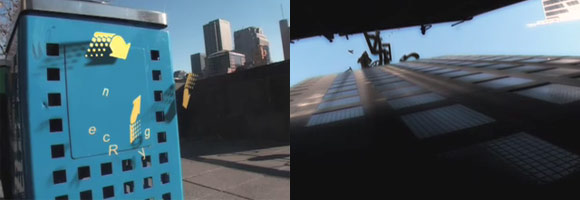I interviewed Stephen Watkins of the beautiful Float video podcast earlier this week. Unfortunately his site, Backspace, was taken down due to bandwidth overusage. It’s back now, so here’s the interview to go with it:

You mention on your site that you’re interested in Podcasts as a delivery medium. Do you subscribe to any video podcasts have any sites which are regular sources of inspiration?
My iTunes is overflowing with video podcasts of all genres from the hilarious Ricky Gervais podcast to my current favourite, the Portable Film Festival Videocast. I also spend a bit of time at motionographer.com which is a fantastic watering hole for motion graphics. The fantastic thing about podcasts is that they are accessible, global and most importantly free. There is something invigorating about being able to share your content and videos with people from around the world.
What do you think makes podcasts work for artists, and is there a revenue stream at some point? (Or does there even need to be?)
Podcasts work for artists because it is a way to broadcast your work (generally) free of censorship and advertising restrictions. In terms of obtaining revenue I guess this depends on the individual artist. You have to ask yourself the question, are doing this for the money? or are doing it to just get your work out there. However, financial income could come in a more indirect fashion such as the exposure of your work leading to freelance work.
What’s your background in moving images? What happened before Float?
I have been studying in a graphic design course for the past 4 years so most of my motion graphics skills have been self taught. However, the basic principles of design remain the same across graphic design and motion graphics. Before float I have created a few other films for various projects ranging from a film for a local city council to some personal experimental pieces.
Can you give us a little technical information: Hardware and software used? Project timeline? Budget?
I run on a G5 powermac and created Float using After Effects 6.5, Final Cut Pro 5 and Photoshop CS2. Float was also filmed on a Sony PD150. Float took around 30 hours to create not including a days worth of shooting and rendering time. The cost of creating Float was essentially nothing as I was able to borrow most equipment free of charge from my university. I was also provided with free website hosting from www.wdata.com.au
I thought I saw after effects there in the shadows and letter movements. The final shot looked like trapcode particular, were the logos manually keyframed or did you use some expressions/plugins in there?
No external plugins were used in the creation of Float. All of the shots involving shadows were manually key-framed while all of the others shots with the floating letters, were created using a compile of a single loop I created of the floating letters flying around. Once this single loop was animated the shots were relatively easy to compile.
30 hours is a really incredibly short period of time for such a project. How did you manage to be so efficient? Were there any timesaving techniques or plugins in after effects which helped you get this completed quickly?
What made the process a lot faster was to carefully pre-plan and storyboard the whole movie before I started. This helped me to keep focused and I knew exactly what I was creating. In terms of timesaving techniques, all I can say is if you are working to a tight schedule, pre-planning your movie is the way to go.
Did you find any surprises during production, sections which were particularly difficult to pull off?
One of the biggest surprises during the production of Float was the extensive time need to render some of the shots. Particularly the final scene in Float where the letters come together which took of over 10 hours to render.
Is the project confined to the 3 episodes displayed on the episodes page of your site, or do you have some more up your sleeve?
At the moment there is only space on the website for three episodes but that will be extended as more episodes are added. I hope to continue to make as many episodes as possible and maybe extend the brand and concept of backspace into other mediums.
Was the music composed specifically for the Float video? Did you have any collaborators for the production process or go it solo?
The music for Float was created specifically for this episode. At the moment Backspace is a one man band although I have received many offers to collaborate which I will be looking into in the future.
Do you have any other projects upcoming or currently underway, or are you leaving your schedule open for the inevitable ad company commissions fuelled by Float?
At the moment my focus is on completing episode 2 and also finishing my honours degree which winds up next month. After that, who knows?